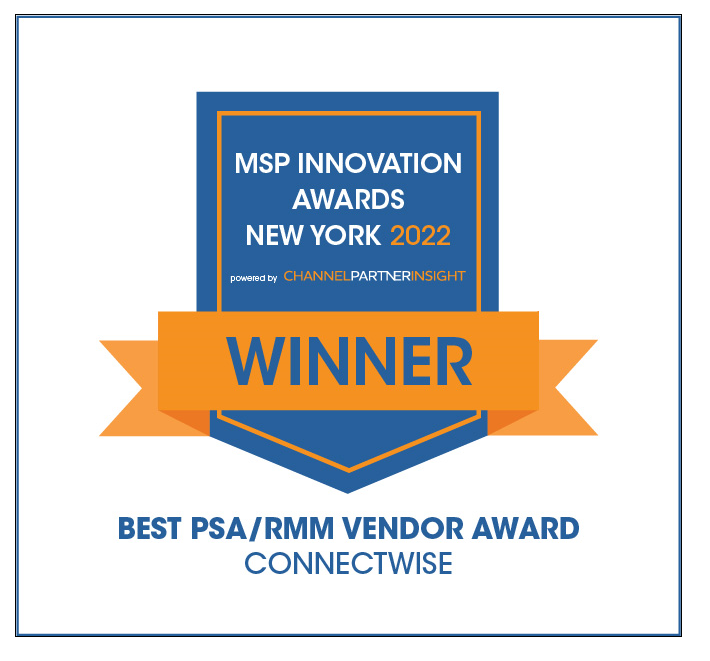Driving productivity through workflow automation
Inefficient workflow processes can greatly hinder the growth and scalability of managed service providers. As you work to expand your operations, tasks that once seemed manageable can rapidly evolve into significant obstacles. These inefficiencies can create bottlenecks in development and hinder your ability to thrive and scale in a competitive market.
Embracing workflow automation offers a transformative solution for businesses seeking efficiency and accuracy. It streamlines repetitive tasks, allowing your team to shift their focus to strategic initiatives that drive business growth and innovation. This shift not only optimizes operational processes, but also unlocks new potential for your organization's development.
In this blog, we will explore the transformative impact of workflow automation on MSP operations. We will identify the bottlenecks that hinder service delivery and how automation can alleviate these issues and drive substantial growth. We will guide you through practical, actionable steps to build automation into your business, tailored to your unique goals.
What is workflow automation and how does it work?
Workflow automation is a methodology that streamlines and automates intricate business processes, often supported by technology. It involves designing a series of automated actions within a business workflow and orchestrating these actions based on predefined procedural rules. This approach manages a sequence of tasks and oversees the flow of data between systems. Workflow automation enhances efficiency, reduces the likelihood of errors, and optimizes overall business operations.
Identifying essential yet time-consuming repetitive tasks in the realm of remote monitoring and management (RMM) should be a first step for MSPs, as these activities can be barriers to efficiency and scalability. Key tasks like IT asset discovery, endpoint management, and patch management are vital for maintaining network and device health. Workflow automation capabilities also enable the offloading of routine Tier 1 support issues, allowing techs to concentrate on more complex service requests while increasing service delivery and customer satisfaction.
The next step involves designing the workflow and outlining each task, decision point, and outcome. This design phase is crucial as it dictates how the automation software will operate.
This software equips users with tools to create and manage workflows, eliminating the need for extensive technical knowledge. Users can often establish these workflows using intuitive interfaces that facilitate simple 'drag and drop' actions.
The power of workflow automation lies in its ability to integrate disparate systems and databases. It ensures that data transfers across systems are seamless, reducing the risk of errors that can occur with manual transfers. Advanced workflow automation also provides analytics and reporting capabilities, offering insights into the performance of workflows and highlighting areas for improvement.
The workflow automation process
This transition to automation is not just about technology but about aligning your business processes with your growth objectives. Here's how you can implement workflow automation in a structured and effective manner:
- Identify repetitive tasks: Examine daily operations to uncover routine functions that are candidates for automation. Focus on activities that, while necessary, are time-intensive and do not require human discretion, such as system updates, client onboarding, and data entry.
- Set clear objectives: Determine your goals you wish to achieve by automating these tasks. Plans may include increasing service speed, reducing human error, or reallocating resources to higher-value activities to facilitate business expansion and operational scalability.
- Choose the right tool: Key considerations should include cloud integration, cost-effectiveness, security, and regulatory compliance. Modern RMM solutions can automate IT maintenance and enable agentless remote management for many MSP scenarios without a steep learning curve. Consider workflow automation tools that integrate with your RMM solution and take advantage of demos and free trials.
- Train your team: A successful automation rollout depends on your team's ability to adapt to new software. Engage with your team from the outset, provide thorough training, and foster a culture of adaptability to ensure a smooth transition to the new automated systems.
- Monitor and adjust: After implementation, tracking your automated workflows' performance is crucial. Use essential KPIs to measure effectiveness and gather feedback from your team to fine-tune the processes. This continuous improvement cycle is vital to realizing the full benefits of automation for your business.
By methodically following these steps, you can harness the power of IT workflow automation to streamline your business operations and create a foundation for sustainable growth and enhanced service delivery.
Use cases for workflow automation
Workflow automation transforms operational efficiency, enabling a focus on growth and client satisfaction. Here's how you can apply it effectively:
- Streamlined client onboarding: Introduce a systematic approach to welcoming clients. IT automation actively tracks every step, from initial data entry to setting up services, creating a positive first impression and laying the groundwork for a strong partnership.
- Efficient service ticket management: Implementing an automated system to handle Tier 1 support tickets can reduce response times while freeing techs up for more strategic projects. The system categorizes, prioritizes, and assigns tickets to the appropriate team member without delay, leading to faster resolutions and happier clients.
- Proactive software monitoring: Automated monitoring tools can remotely and proactively scan for issues before they escalate, keeping your managed devices and networks up and running and your end users happy. If there is an issue, auditing capabilities can help you understand what transpired and why to help mitigate future risk or outages.
- Automated billing and invoicing: Solutions like professional automation (PSA) software can automate invoicing and billing processes, helping your business get paid faster. In addition, integrating PSA and RMM solutions allows you to add information from your RMM to your customer agreements or invoices.
- Operational insight and reporting: Reporting and real-time dashboards can compile data across various metrics, providing a comprehensive view into the health of your endpoints and network. This data-driven approach aids in making informed decisions to drive business growth and provide more value to your customers.
Essentially, automation facilitates an environment ripe for growth and scalability. With the right automated workflow software, the potential for scalability is vast, ensuring that as your client base grows, your service quality and operational efficiency grow alongside it.
Benefits of workflow automation
Workflow automation stands as a cornerstone of operational efficiency. By leveraging technology to automate routine tasks, businesses can streamline processes, reduce errors, and free up valuable time for strategic thinking and growth.
Here’s how workflow automation can enhance the operational efficiency of your business:
Streamlined task management
Streamlined IT task management revolutionizes task handling by managing repetitive and time-consuming activities with precision. Automating workflows guarantees consistent and error-free task completion, liberating your team to concentrate on more strategic initiatives.
With workflow automation, you can set up a sequence of automated actions for tasks that follow a predictable pattern. This means tasks that once required manual initiation and monitoring can now operate autonomously. For instance, you can automate ticket routing and service requests to ensure they reach the right person immediately.
This automation extends beyond simple tasks. It can streamline complex projects that involve multiple steps and approvals. An automated workflow triggers notifications upon task completion, prompts the next step in a process, and provides real-time updates. This level of automation reduces the need for constant check-ins and manual handoffs, which can decelerate project completion.
Streamlined task management provides a clear audit trail. The system records every action taken within an automated workflow, ensuring transparency and accountability. This proves crucial for upholding standards and regulatory compliance.
Enhanced team collaboration
Workflow automation enhances collaboration and enables a more streamlined business operation. Implementing automation for routine tasks allows your team to concentrate on more complex projects. This shift fosters a collaborative environment where team members can easily share information and work together on tasks without the barriers of manual processes.
Automated workflow ensures that all team members have access to the same information and can track the progress of tasks in real-time. This transparency eliminates the silos that often occur when teams work in isolation, leading to a more cohesive and aligned workforce.
IT workflow automation specifically tailors the collaborative boost to the unique needs of tech-driven teams, streamlining technical processes that are often time-consuming and error-prone when done manually. By automating these workflows, your team can respond more quickly to IT issues, share solutions more effectively, and maintain a higher service quality.
Improved customer service
Workflow automation is a powerful ally in enhancing customer service. Businesses that integrate automated workflows into their customer service operations can ensure they answer every customer query and address every support ticket systematically.
For instance, when a client submits a query, an automated system can instantly acknowledge receipt, which makes them feel heard. This system can then categorize the query based on predefined rules and direct it to the service agent most capable of resolving it. This approach accelerates the resolution process and minimizes the risk of human errors, such as neglecting a customer's ticket or sending it to the wrong department.
Automation maintains a consistent communication flow. Teams can tailor it to update clients on the status of their queries, which keeps them informed at every step. Such transparency builds trust, fosters positive relationships, and transforms customer service from a reactive to a proactive function.
Data-driven decision making
Data-driven decision-making is a cornerstone of modern business strategy, and workflow automation is a powerful tool to enhance this process. Automating routine tasks makes data collection more consistent and error-free, providing a reliable foundation for analysis.
With automation, businesses can gather data at every step of a process. This data offers insights into performance bottlenecks, process inefficiencies, and opportunities for improvement. These features can identify trends and patterns that might go unnoticed by human analysts. For instance, if there's a recurring delay at a certain point in a process, the system can flag it for review.
The real-time nature of data collected through automated workflows is also crucial. Decision-makers can access up-to-date information anytime, which is vital in a fast-paced business environment. This immediacy means businesses can respond quickly to emerging trends, customer behaviors, and market changes.
Scalability and growth
Workflow automation is essential in managing the complexities that come with business growth. It enables smooth scaling of operations, handling increased workloads efficiently without the need for a proportional increase in staff or resources. For example, automated systems effortlessly manage tasks like processing invoices or handling customer queries, maintaining high accuracy and efficiency even as business demands grow.
This scalability is crucial for maintaining quality during expansion, reducing the risk of human error, and upholding high operational standards. Automation also fosters agility, allowing businesses to quickly adapt to market changes and seize new opportunities with minimal disruption.
Software solutions for workflow automation
Workflow automation significantly enhances business efficiency by streamlining processes, ensuring quality, and maintaining accuracy. To fully capitalize on these advantages, it's crucial for businesses to incorporate effective software solutions, and ConnectWise is here to help.
ConnectWise RMM is a comprehensive remote monitoring and management solution for MSPs looking to boost their operational efficiency and support scalability. With over 1000 out of the box monitoring conditions, simplified, AI-generated scripting, and access to powerful 24/7 NOC services, the intelligent automation of routine tasks can unlock more proactive support and time savings for your team.
Plus, with ConnectWise Asio™ workflow orchestration, you can take your RMM and PSA software to the next level with seamless integration across multiple ConnectWise products and third-party solutions.
For a comprehensive understanding of how ConnectWise RMM can transform your business operations, start your free trial today.


